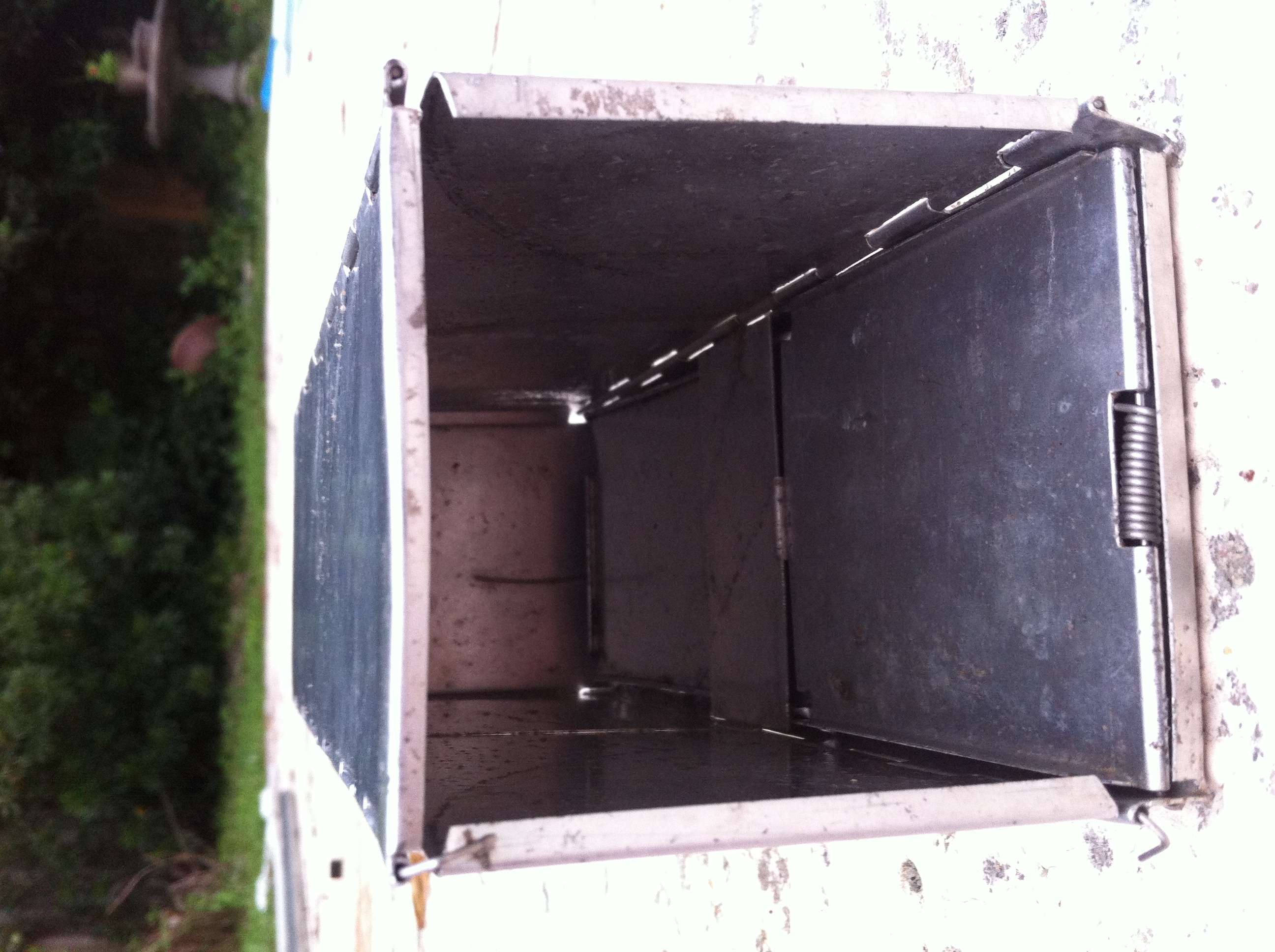Sherman trap on:
[Wikipedia]
[Google]
[Amazon]
 The Sherman trap is a box-style
The Sherman trap is a box-style

Small Mammal Monitoring
' in: Multiple Species Inventory and Monitoring Protocol. U.S. Forest Service. 11 p.
H.B. Sherman Traps
website {{Trapping Animal trapping Mammalogy Biological techniques and tools
animal trap
Animal trapping, or simply trapping or gin, is the use of a device to remotely catch an animal. Animals may be trapped for a variety of purposes, including food, the fur trade, hunting, pest control, and wildlife management.
History
Neolithic ...
designed for the live capture of small mammals
Mammals () are a group of vertebrate animals constituting the class Mammalia (), characterized by the presence of mammary glands which in females produce milk for feeding (nursing) their young, a neocortex (a region of the brain), fur o ...
. It was invented by Dr. H. B. Sherman in the 1920s and became commercially available in 1955. Since that time, the Sherman trap has been used extensively by researchers in the biological sciences for capturing animals such as mice, voles
Voles are small rodents that are relatives of lemmings and hamsters, but with a stouter body; a longer, hairy tail; a slightly rounder head; smaller eyes and ears; and differently formed molars (high-crowned with angular cusps instead of lo ...
, shrews
Shrews (family Soricidae) are small mole-like mammals classified in the order Eulipotyphla. True shrews are not to be confused with treeshrews, otter shrews, elephant shrews, West Indies shrews, or marsupial shrews, which belong to different ...
, and chipmunks
Chipmunks are small, striped rodents of the family Sciuridae. Chipmunks are found in North America, with the exception of the Siberian chipmunk which is found primarily in Asia.
Taxonomy and systematics
Chipmunks may be classified either as ...
. The Sherman trap consists of eight hinged pieces of sheet metal
Sheet metal is metal formed into thin, flat pieces, usually by an industrial process. Sheet metal is one of the fundamental forms used in metalworking, and it can be cut and bent into a variety of shapes.
Thicknesses can vary significantly; ex ...
(either galvanized steel
Galvanization or galvanizing ( also spelled galvanisation or galvanising) is the process of applying a protective zinc coating to steel or iron, to prevent rusting. The most common method is hot-dip galvanizing, in which the parts are submerg ...
or aluminum
Aluminium (aluminum in American and Canadian English) is a chemical element with the symbol Al and atomic number 13. Aluminium has a density lower than those of other common metals, at approximately one third that of steel. It ha ...
) that allow the trap to be collapsed for storage or transport. Sherman traps are often set in grids and may be baited with grains and seed.
Description
The hinged design allows the trap to fold up flat into something only the width of one side panel. This makes it compact for storage and easy to transport to field locations (e.g. in a back pack). Both ends are hinged, but in normal operation the rear end is closed and the front folds inwards and latches the treadle, trigger plate, in place. When an animal enters far enough to be clear of the front door, their weight releases the latch and the door closes behind them. The lure or bait is placed at the far end and can be dropped in place through the rear hinged door.
Variants
Later, other variants that built upon the basic design, appeared - such as the ''Elliott'' trap used in Europe and Australasia. The Elliott trap has simplified the design slightly and is made from just 7 hinged panels.References
*Ch 5:Small Mammal Monitoring
' in: Multiple Species Inventory and Monitoring Protocol. U.S. Forest Service. 11 p.
Further reading
*External links
H.B. Sherman Traps
website {{Trapping Animal trapping Mammalogy Biological techniques and tools